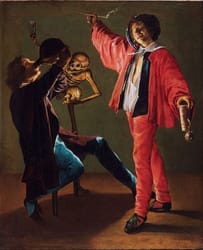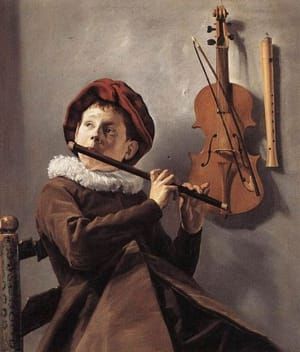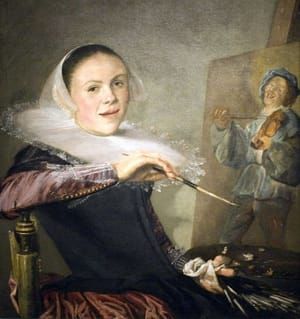

The Last Drop, 1639
Judith Leyster
The signs are clear that the men have indulged too much. The tankard is tipped empty, the long pipe smoking. The drinker at the left is maternally gripped to his jug, cheeks bulging. And as if this wasn’t enough to connote avarice, there are the items that the grimacing skeleton holds too. A flickering candle reaching its end, a running hourglass, and, somewhat more obscurely, his own head. A sight to suggest the loss of reason maybe, or, more likely, something to underscore the uneasiness of the image.
Whilst the moral lesson of The Last Drop is practically spoon-fed (the title a pun on both the end of the bottle and the end of life), what holds interest is the sense of light. From the candle in the middle we have not only the bones themselves illuminated in all their macabre glory: the broken teeth, the wide, searing eyes which are enrapt looking at the oblivious gulper. But the features of the indulged too, the ornately clothed smoker lit up in a delicious execution of skill, the watched man on the left shown on his darker side with the light peeping out, gilding a three dimensional edge to the image.
The light also draws us into the face of the standee whose look is a perfect vision of drunkeness. His mouth toothy and agape above eyes rolled back, looking off over the shoulder of the viewer to some beleaguered sense of reason.
Alongside the skeleton, this element of otherwordlyness is compounded through the blank, grey background. Where actually are we here? A bar or something of that type would make sense but they seem on display as a lesson rather than amidst mere depiction. Everything is good in moderation so they say, even moderation.
[230 years after Judith Leyster’s death for her to be rediscovered for a contemporary audience]
Uploaded on Feb 13, 2018 by Suzan Hamer
Judith Leyster
artistArthur
Wait what?


